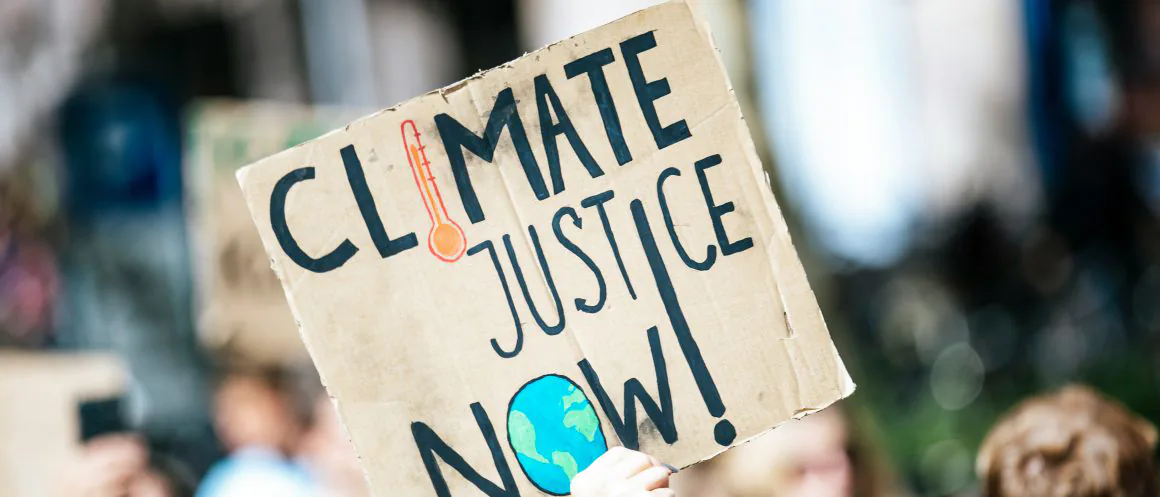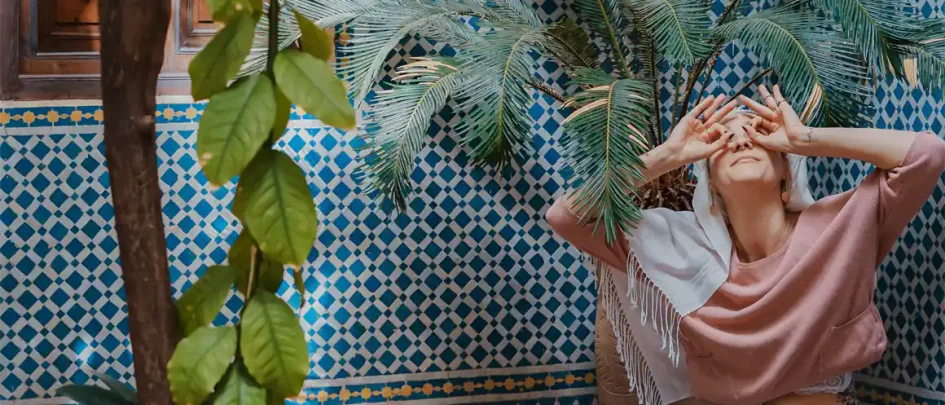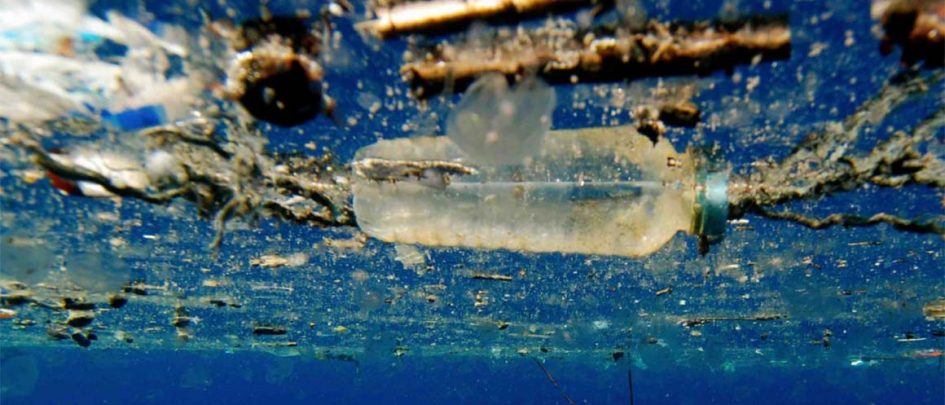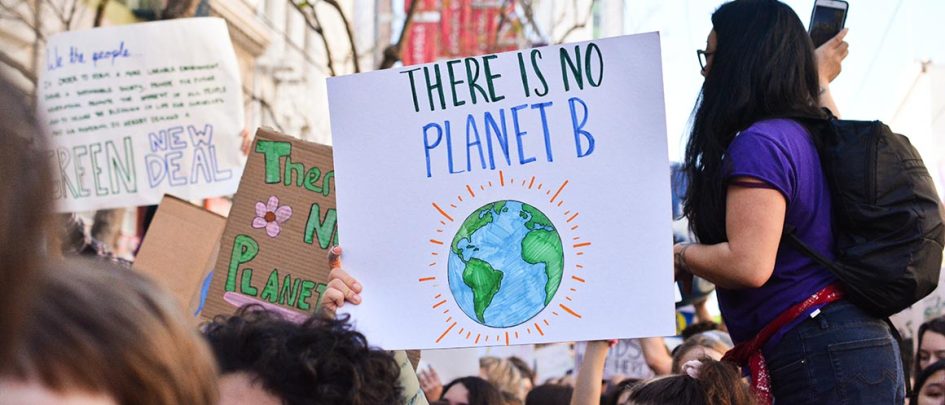Our pals at Friends of the Earth recently hosted their annual Youth Climate Justice Gathering, an inclusive space for young activists to learn from experts and each other to build their confidence and capability in campaigning. Friends of the Earth are a leading environmental organisation working to create a sustainable future, fighting for climate justice through grassroots campaigns and legal action. Here we go in depth with a climate justice activist to explore issues and solutions facing young people in tackling the climate crisis.
This is a guest blog written by Tamara Ullyart at Friends of the Earth.
Tell us about your role at the Friends of the Earth Youth Gathering
I was on the Youth Leadership Team at the Friends of the Earth Youth Gathering; nine young activists, all bringing different perspectives to work out how to run the most impactful, and inclusive, Youth Gathering yet. We considered everything from which workshops to run, to what snacks were needed. I also helped host the event and ran a workshop on public speaking.
I’ve helped run the Youth Gathering in previous years too; it’s always great to see how much people get out of it.
What inspired you into climate justice activism?
In short, nature documentaries, and my mum.
When I was 6, I watched a documentary about Yellowstone National Park in Alaska. Just old enough to understand that what I saw was real, I was captivated by the beauty of what I saw. ‘The Land of the Midnight Sun’, they called it, being far enough north to have summer months where the sun never sets. It sounded, and looked, like a fairytale. But it was better than that, it was real.
From that moment on, I knew I wanted to protect the natural world. I discovered David Attenborough, religiously watching everything series he’d ever made. From there, I began to learn about the threats that nature faced, which inspired me to get involved with environmental activism from the age of 7.
Such an early and consistent involvement in activism wouldn’t have been possible without my mum. She ran the local Friends of the Earth group throughout my childhood and early adulthood, and is my role-model for impactful, sustainable, activism. I wouldn’t be on the path I am now without her. She taught me to balance refusing to give up in the face of challenge, with remembering to look after myself in the long-haul of activism. I’m still learning, and I am forever grateful.
What does climate justice mean to you?
Climate Justice means actually tackling the climate crisis, and the nature crisis. And it means doing so it a way that is fair and equitable. That’s why brands like Natracare – who are guided by a genuine ethical and sustainable ethos to support systematic positive change – are so important.
The climate and nature crises will affect everybody differently. Climate Justice means acknowledging, respecting and responding to these differences.
To summarise:
- Those who are driving the climate breakdown should be made to pay for the damage they have done and should majorly fund the action that is needed to solve this crisis.
- Those who face the worst impacts of climate breakdown should be given the most support in adapting to them.
And, given the youngest generation have had the least impact on the climate crisis, and will see its worst impacts, their interests should hold the greatest weight in decision making.
On a personal level, Climate Justice means doing everything you reasonably can to take and promote climate action for a sustainable future. What is ‘reasonable’ will be different for everyone.
The gathering creates an inclusive space for the young working class, people of colour and disabled people, all aged 12–25, why’s is important?
Creating a space for marginalised young people to explore campaigning on climate change and nature is important for three main reasons:
- These are the people who often find it hardest to participate in climate action, due to social, financial, physical, and/or personal barriers.
- These are the people most likely to be disproportionality impacted by the climate breakdown and the nature crises. This means an extra effort needs to be made to include their perspectives on how, when and why we act.
- These people often make phenomenal campaigners! At base, activism relies on overcoming obstacles, and problem-solving with resilience. These are skills which marginalised young people commonly have a lot of, partly because the challenges they often face growing up in an inequitable world.
Many of the most innovative and impactful campaigns in history have been led by those from a working-class background; those of colour; people with disabilities; and/or those who were young. Be those children, teenagers, or young adults. The Youth Gathering therefore provides a space for future innovation.
What’s different about imagined futures in visioning sessions?
At Friends of the Earth youth gatherings, we imagine a future gathering in 30 years’ time, where campaigning has changed the world for the better in visioning sessions.
I like to imagine reaching Drawdown – the point at which the amount of greenhouse gasses in the atmosphere is reduced to pre-industrial levels. In other words, the point at which we ‘solve’ climate change.
I imagine telling my children the story of climate breakdown like its beating smallpox, or landing on the moon. Where I now feel despair, my children will see this period of history as source of pride and hope. Climate breakdown will be the biggest challenge that humanity ever faced, grappled with, and overcame.
I think the biggest difference you’d see in that scenario would be a much deeper respect for the natural world, and for the wider global community. We’d finally have internalised that there is no planet B and learnt to treat Earth with the love it deserves. That’s one of the reasons I love Natracare – by avoiding plastic and toxic chemicals in their products, and working with organisations that protect people and planet, they’re modelling that mindset shift.
How do people perceive “activism”, and what does it look like for you?
I hope people are increasingly seeing activism as a necessary, and a positive. However, ‘Activist’ and ‘Activism’ do often come with negative perspectives. In my experience, people frequently imagine overly emotional teenagers needlessly undertaking dangerous, destructive, and frankly inconvenient actions. Those assumptions are incorrect, and that image represents a major oversimplification which directly (and sometimes deliberately) undermines the vital importance of activists and their actions.
Living with cerebral palsy, I also must add the label ‘disabled’ into that mix, which often creates perceptions that are even more sceptical and/or hostile. Until recently, I deliberately distanced my disability from my activism. As a young activist, I already struggled to make my voice heard; being a young disabled activist would hardly make things easier. Only recently did I realise that my disability strengthened my activism, forcing me to hone highly useful skills, while giving me a unique perspective and ability to resonate with people.
What’s needed from society to enable young people to do what’s required for climate change?
Stop expecting young people to do what’s needed!!
The youngest generations have been born into a crisis they did not create and will suffer the horrific consequences of decisions they did not make.
All too often, young people are systematically ignored and entirely disenfranchised, criticised for their activism, and judged for their panic. Simultaneously, young people are expected to be the leaders on climate action, to make change happen, to give everyone hope, to fix things.
This is like being born on the Titanic after it’s hit the iceberg, and being expected to save the ship without being materially able to influence it. Oh, and the other passengers won’t even listen to you – they’re busy arguing about whether you’re over-reacting, or inspirational. Don’t worry though, in time you’ll be in charge – in time, that is, for the captain to go down with the ship.
What needs to happen to enable young people to do what’s needed on climate change? Stop relying on young people to do ‘what’s needed’. ‘What’s needed’ is for everyone to do everything they reasonably can, regardless of their age, gender, job, social class, or anything else.
Discover how Natracare is supporting climate justice through sustainable, ethical products.












